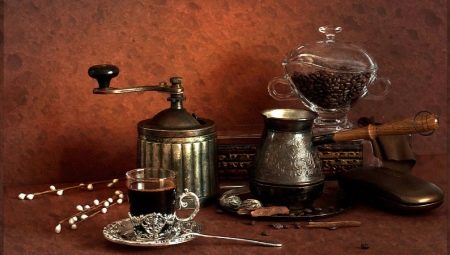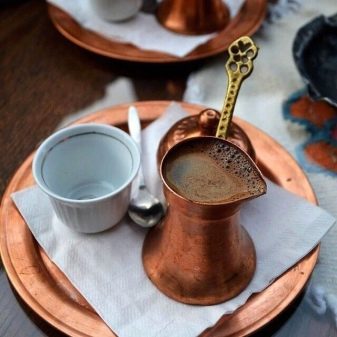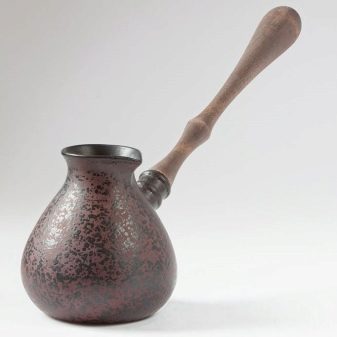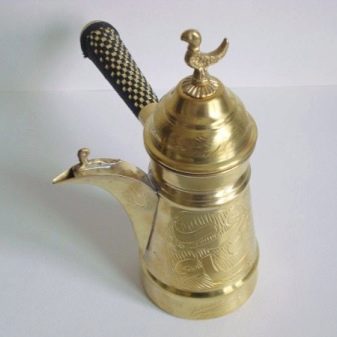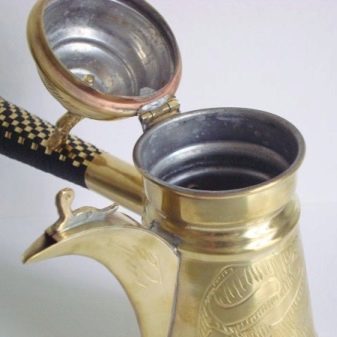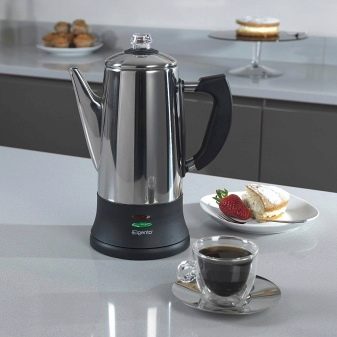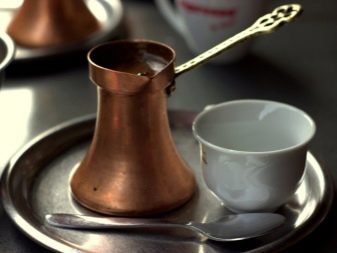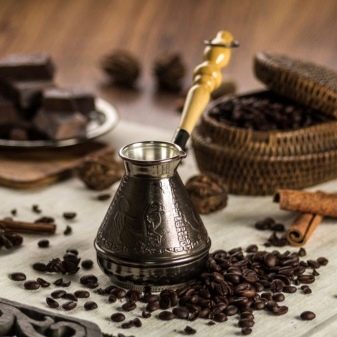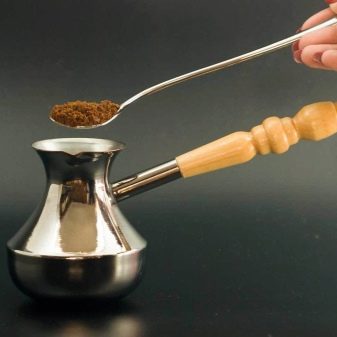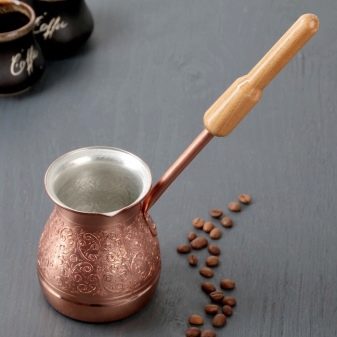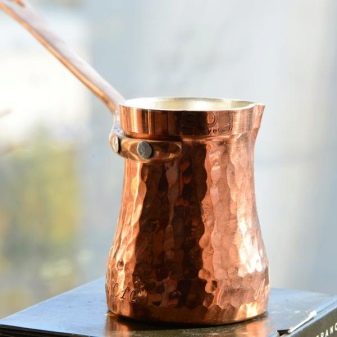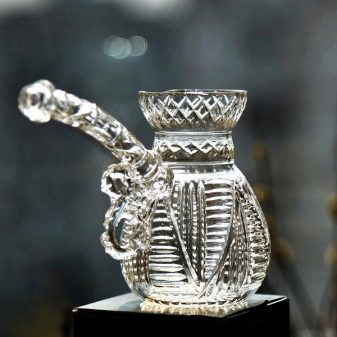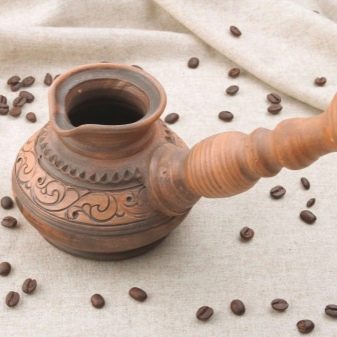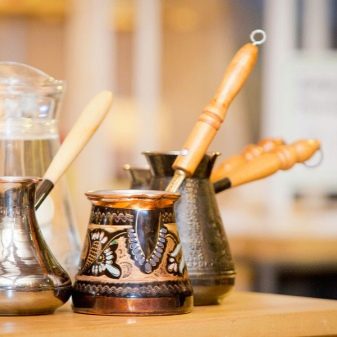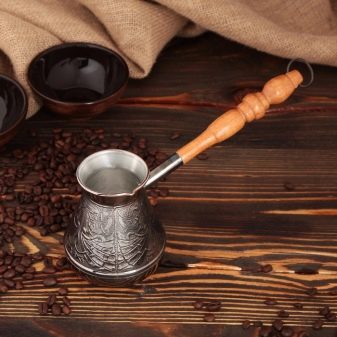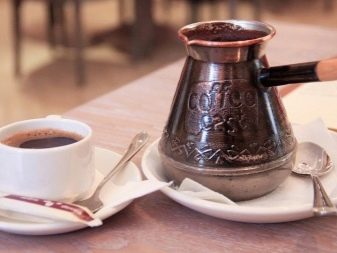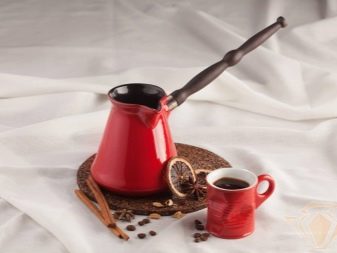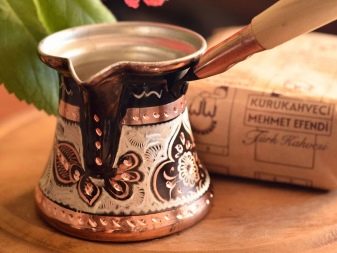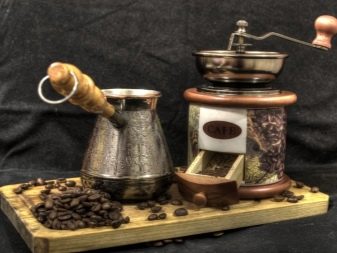Over the past few centuries of human existence, coffee has become an integral part of the life of almost every one of us. In order to properly and accurately brew this delicious drink, many different vessels and accessories were invented. The most popular of them are Turk and jazz, today we will examine their main differences.
A bit of history
Vessel with an unusual name ibrik called the first utensils for brewing coffee. In essence, this is just a beautiful jug. Its long nose is well suited to pour hot liquid, and the design itself is excellent for carrying over long distances in bags. Usually ibriks were not made large - their volume did not exceed 300 ml. But nothing prevented them from having large sizes, since they could be used to store water.
Replaced them dalla. She became popular during the importation of coffee in Arabia. In those years, he ceased to be considered a drink of commoners and confidently entered the diet of rich people.
That is why dalla, although it was also an ordinary pitcher, looked much richer, more picturesque, more luxurious.
Its main differences were chased pattern and the material itself - metal instead of clay. In addition, dalla was used exclusively for coffee, and not for water. Gradually, it began to make a cone-shaped form, and thus turned out to be the jazz, to which we are all used today.
After some time, another interesting device was invented - percolator. So it was called by the inventor (French priest) from the word percolare - “seep, penetrate”. The whole structure consisted of two parts and worked quite simply. In the upper bowl, in the walls of which holes were made, they poured ground coffee and poured boiling water on it abundantly. The liquid seeped into the lower container already saturated, that is, in the form of a delicious, invigorating, aromatic drink.
What is a jazz?
This rather exotic word from Turkish translates as "Hot coal". Such a beautiful name was coined for a container that helps brew milled coffee beans. Moroccan or any other classic jazz represents an oblong vessel with thick walls, a very wide bottom and with a long, possibly wooden handle.
According to traditions, this device is made of copper, and inside it is covered with a special tin, safe for the human body. The fact is that copper itself as a material of manufacture, when heated, adversely affects the human body. That is why you have to put another layer on the inside.
This metal is good conductor of heat and durable enough in operation. Before brewing coffee, check whether the inner coating is in order: if copper is visible there, then the cezve cannot be used. Sometimes in more expensive models, the inner coating is made silver.
Such a variation does indeed have beneficial properties due to ions, but such a product will not only be more expensive, but also find it not so easy.
Production options
As mentioned above, most often Cezve is made from extruded copper, but sometimes forging is also used.. The first option allows you to make the walls of cezve thinner, and in the second case, the walls are thicker. Thin walls of the vessel make the process of making the drink faster, however, the service life of the cezve decreases, and the quality of the coffee deteriorates. Forged model implies a more uniform heating and a long service life. Most often it is more expensive, but very beautiful cezves, their walls are decorated with neat carvings, and the handles are made of durable wood.
According to tradition, such thick-walled containers were used to make an aromatic beverage on the sand. For this, the latter, together with the pebbles, were warmed up so as to produce a red-hot mass, and put a cezve on top. Thus, there was a great coffee, which today can not be made even in the best coffee machine.
For novice coffee lovers who want to prepare this aromatic drink in a cezve, you can choose quartz product. Mountain quartz allows you to make the walls completely transparent. Accordingly, you can always notice in time when the water starts to boil and turn off the heat, so as not to spoil the taste of coffee and do not stain the stove. In addition, this version of the performance looks very beautiful and unusual. At first glance, it even seems that the product is made of glass, but at the same time it is resistant to high temperatures.
There are also options for making cezve from chinese clay. However, this performance is less common than all the others. Among the advantages of this option is the heterogeneous structure of the clay, which allows you to further saturate the coffee with oxygen. The aroma of the drink brewed in this vessel is truly rich and very pleasant.
If you are looking for a dzhezva, but you can not decide on the material, then take anything, except stainless steel. This, perhaps, will last longer, but will adversely affect the taste of the drink. Coffee, even the most expensive and delicious, when brewing it will acquire the taste of metal.
How to choose?
When choosing a cezve, you should adhere to the following recommendations.
- Need to pay attention to the pen. The best choice is a removable model, in which case you can not only better clean the entire structure, but also replace the handle if it is uncomfortable.
- As for the volume, you should not choose yourself too much capacity, unless, of course, you do not expect to prepare at the same time a large amount of coffee. To prepare one serving of flavored drink, no more than one hundred and fifty milliliters is enough. And most of the coffee recipes for such volumes and calculated! But if you have a large family and everyone wants coffee in the morning, then you can safely buy a 0.5 liter vessel.
- If you choose the shape of the product, the cone-shaped models with a thin neck are perfect for continuous use. This is convenient and practical, since this configuration allows you to quickly heat the water, and the prepared coffee will slowly cool.
In addition, this design perfectly preserves the aroma of the drink.
Turk and jazz - the same thing?
Turk is the name of a cezve that has taken root in our area.
Since the original name was difficult to pronounce for native Russian speakers, they began to call this device, focusing on where they brought the tradition of drinking coffee to us. In this case, the traditional Turkish method of brewing is also meant - on sand and pebbles.
Most often, in the manufacture of the Turks, preference is not copper, although such options are also present.
Most in stores of such products from ceramicsthey are common and inexpensive. There are also products from brass. Of course, you can find the classic versions of stainless steel, clay and copper. Both shape and volume may vary.
Despite the similarities, some differences between the poles and the Turk are still present, since the latter is more adapted to the needs and requirements of the modern man. Jezva traditionally has a narrow neck, while the Turks have a funnel. But in its functional both options are considered identical.
Loyalty to tradition
Coffee Turk or jazz, as it was originally called, for many years already occupies a place of honor in the kitchen of the lover of a tasty, aromatic drink. With the passage of time, new coffees were brought out, new recipes for its preparation appeared, modern units for brewing the drink were created. However, despite modern alternative solutions and technologies, Turk is still in demand and beloved.
A huge number of coffee connoisseurs refuses to accept any other devices, and still brew their favorite drink in a beautiful copper cezve.
They are fully confident that the best coffee can be obtained only with the use of high-quality Turks and therefore do not change the tradition.
To learn how to make coffee in Turk correctly, see the next video.
